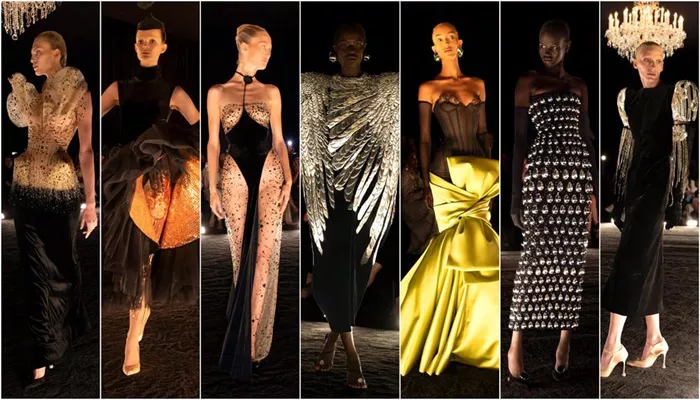For decades, Black models have called for greater representation in high fashion shows, urging designers to showcase more diversity on the runway. As Fashion Week sweeps across cities like Paris, New York, London, and Milan, one issue remains unchanged: the complex relationship between Black models and the fashion industry, especially on high-profile catwalks.
Black models have long made history, breaking barriers in the industry. Icons from the 1960s to the 1990s like Cicely Tyson, Naomi Campbell, Iman, and Tyra Banks paved the way. Tyra Banks, notably, became the first Black model to appear on the cover of Sports Illustrated and walk for Victoria’s Secret.
At Paris Fashion Week, renowned designers like Valentino, Saint Laurent, Schiaparelli, and Givenchy presented their latest collections. Schiaparelli’s creative director, Daniel Roseberry, sought to evoke nostalgia with a collection inspired by the 1950s, aiming to give the audience a sense of simplicity and timeless style. The show took place in the Hôtel Salomon de Rothschild, a historic venue known for hosting prestigious couture events.
Valentino’s winter collection, presented at the Pozzo di Borgo mansion, featured an all-black collection with a mix of styles, including trapeze skirts, wrap shirts, and ruffled leather jackets. The show was notable for its diversity, with models like Anok Yai, Alek Wek, and Adut Akech, all hailing from South Sudan.
While many designers are making strides in diversifying their runways, one question persists: Where are the Black models who identify as African American? Many of the Black models seen in top fashion shows today are from Africa, leaving a noticeable gap in representation for African American models.
Additionally, Black models often face pressure to alter their hair to fit high fashion standards. Londone Myers, a model in the industry, shared her experience, saying, “When Black models start, I feel like we all have to have short-cropped hair.” Behind the scenes, a lack of skilled stylists who can work with Black hair often results in models wearing short cuts or cornrows. In many cases, models are left to style their own hair, with little support from the production team.
Despite the success of shows like the Paris Fall/Winter 2024 collection, Black models continue to push for change, advocating for greater inclusivity and better resources within the high fashion industry.
Related topics:
- These Puffer Jackets Are Bold Fashion Statements You Can’t Miss
- Why Louis Vuitton’s Nicolas Ghesquière Chose Antoni Gaudí’s Park Güell in Barcelona for the Cruise 2025 Show
- Eco-Friendly Fashion Takes Center Stage at Hoboken’s ‘Social Fabric: A Thrifted Fashion Show’

